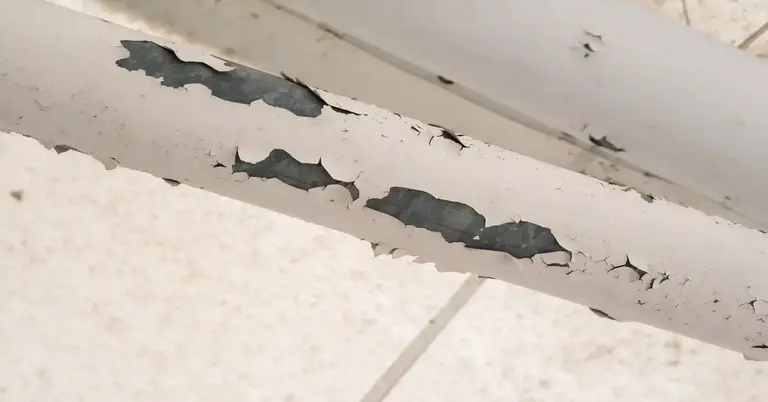Home Decorating Tips


Home Decorating Tips
7 Interesting Facts About Lead Paints
Posted on May 28, 2025
Last updated September 1, 2025
When you’re starting a new build or renovation project, it’s easy to get swept up in the fun stuff like choosing paint colors, finishes, and creating that social media post-worthy space. That’s completely natural. But before you pick up that brush, there’s one detail that’s just as important as the color on the label: what’s actually in your paint.
Many modern paints now feature low odor and quick drying times, which is a plus. However, low odor doesn’t always mean non-toxic. It’s still crucial to check that your paint is free from lead.
Lead exposure can have serious, long-term health effects, especially for young children. Unfortunately, it’s a risk that often gets overlooked during home improvement projects.
So before you open that paint can, here’s everything you need to know about lead paints.
- What is Lead?
Lead is a heavy metal that naturally occurs in the earth’s crust. It has been used in residential and commercial construction projects for decades due to its unique properties, such as being durable, malleable, and resistant to corrosion. However, despite these useful traits, lead is highly toxic to humans and animals. - Lead Paint in Old Buildings
Lead was used in houses, schools, and buildings for decades, even as early warnings about its health risks began to surface. Despite growing concerns, it wasn’t until 2017 that lead-based paints were banned for residential use in the Philippines.
That long history means that many older homes still have it—especially those built before the 1970s. If you live in or are buying an older home, there’s a good chance that lead paint could still be hiding under newer layers.
- Lead Safety Laws
Under the Department of Environment and Natural Resources (DENR) Administrative Order 2013-24, known as the Chemical Control Order for Lead and Lead Compounds, the use of lead-based paints was officially phased out in the Philippines. Starting January 1, 2017, lead was no longer allowed in architectural, decorative, and household paints. By January 1, 2020, the ban extended to industrial paints.
This order led to significant changes in the paint industry, prompting manufacturers to eliminate lead-based materials, which were once commonly used as pigments, drying agents, or corrosion protectors. These harmful substances were replaced with safer, more environmentally friendly alternatives.
- Children Are Most Vulnerable
Young children are particularly vulnerable to lead poisoning because their bodies are still developing. They’re also more likely to put their hands or toys in their mouths, making it easy to ingest lead dust without knowing it. Even small amounts of lead exposure can lead to serious health issues in kids, including lower IQ, learning difficulties, and behavioral problems.
- Adults Aren’t Immune
While children face the highest risks, adults aren’t immune to the harmful effects of lead. Long-term or repeated exposure can quietly impact your health in serious ways. Lead has been linked to high blood pressure, kidney damage, and fertility problems in both men and women. It can also affect the nervous system, leading to fatigue, headaches, memory issues, and even mood changes. Some people experience joint and muscle pain that can feel like arthritis.
- Invisible Threat
It’s not just visible paint chips that pose a risk, lead dust is an invisible threat that can be just as dangerous. It’s often released during renovations or as old paint deteriorates. The scary part? This fine dust can be easily inhaled or accidentally ingested, leading to lead poisoning without any immediate or obvious symptoms.
- The Irreversible Damage
Once someone is poisoned by lead, the damage is often irreversible. While some effects on the kidneys and blood may be reversible, the impact on the central nervous system, especially in children, is permanent.
What You Can Do
If you suspect your home has lead paint or you’re planning to renovate an older property, here are steps you can take to help protect yourself and your family:
- Get Your Houses Tested
Hire a certified lead inspector to determine if lead paint is present. - Keep Paint Surfaces Intact
Avoid sanding, scraping, or disturbing painted areas unless necessary. If the paint is peeling or chipping, take immediate steps to repair or seal it.
- Clean Regularly
Wet-clean floors, window sills, and other surfaces to reduce lead dust. Use a HEPA (High-Efficiency Particulate Air) vacuum and avoid dry sweeping or dusting.
- Avoid DIY Lead Paint Removals
Don’t attempt to remove or repair lead paint yourself unless you are trained in lead-safe work practices. Hire certified professionals when remodeling.
- Monitor Children’s Health
Have children under six tested for lead exposure, especially if you live in an ancestral house or a high-risk area.
- Practice Safe Renovation
Make sure contractors are certified under the EPA’s RRP (Renovation, Repair, and Painting) Rule and follow lead-safe practices during any work.
- Use Only Lead-Safe Paint
When repainting or renovating, choose paints that are labeled lead-safe and certified for low or zero VOCs.
If you’re looking for non-lead-based paints, feel free to visit Island Premium Paints’ website.
Island Premium Paints is one of the few paint manufacturers in the Philippines to earn the Lead Safe Paint® Certification, which means that their products meet the DENR’s (Department of Environment and Natural Resources) strict lead limit. They’ve also been recognized by the EcoWaste Coalition for their commitment to removing lead-based ingredients and choosing safer, lead-free alternatives.
References:
https://www.who.int/news-room/fact-sheets/detail/lead-poisoning-and-health
https://www.sunstar.com.ph/baguio/opinion/philippines-makes-history-phasing-out-lead-paints
https://www.epa.gov/lead/learn-about-lead
https://www.cdc.gov/lead-prevention/prevention/paint.html
https://extension.colostate.edu/topic-areas/family-home-consumer/lead-based-paint-in-homes-9-538/
https://www.epa.gov/lead/lead-renovation-repair-and-painting-program
Our Products
Our line of high quality paints and products will give your home or project the vibrancy it needs.
Explore Colors
Ready to explore colorful possibiliies today? View our popular paint colo combination palettes for great color schemes and room design ideas for interior and exteriors.



